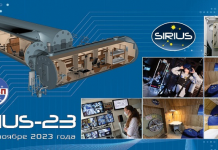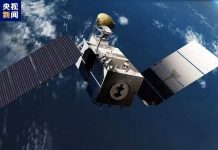Last updated on December 8th, 2022 at 03:13 pm
NASA is interested in the damage to the asteroid Bennu due to the landing of the OSIRIS-REx probe
NASA’s OSIRIS-REx probe is about to assess the extent of the disorder it left behind on the surface of asteroid Bennu after collecting samples last fall. On April 7, the spacecraft will come close to the asteroid when it performs its last flyby to take pictures of the surface of a celestial body.

During the flyby, the probe will observe Bennu from a distance of about 3.7 km – the closest since the Touch-and-Go soil sampling events on October 20, 2020.
The OSIRIS-REx team decided to add a final flyby after the asteroid’s surface underwent significant changes due to sampling. At the time of contact, the spacecraft’s sampling head plunged 48.8 cm into the asteroid’s surface and simultaneously released a compressed charge of nitrogen gas. Disturbed by a significant amount of surface material and the craft’s engines during its activation for departure from Bennu. Because the asteroid’s gravity is shallow, the automatic interplanetary station’s impacts had a serious impact on the sampling site, displacing a mass of soil and dust. The final flyby of Bennu will allow the mission team to learn how the probe’s contact with the surface changed the sampling location and the surrounding area.
This single flyby will, in fact, repeat one of the observations made during the 2019 phase of the asteroid exploration. OSIRIS-REx will survey Bennu for 5.9 hours, slightly longer than the asteroid’s full rotation. During this time, the PolyCam will receive high-resolution images of both the northern and southern hemispheres of Bennu and its equatorial region. The team will then compare the new images with similar ones taken in 2019.
Most of the spacecraft’s other scientific instruments will also collect data during flight. For example, we are talking about the MapCam camera (it will take pictures of the asteroid’s surface in four spectral ranges to build a three-dimensional model); thermal emission spectrometer OTES (building a map of temperatures and mineral composition of the surface); spectrometer of visible and infrared range OVIRS (construction of a map of the location of inorganic and organic substances) and a block of laser rangefinders OLA (the topographic plan of the surface). The use of these instruments will allow the team to assess each of the scientific instruments’ current state onboard the probe, as dust-covered them during sampling. Understanding the instruments’ state is necessary to plan for possible extended mission objectives after the samples are delivered to Earth.
After flying around Benn, the probe will take several days to transmit data to Earth. After that, scientists will assess the changes in the asteroid’s surface and scientific instruments’ work. The spacecraft will remain within Asteroid Bennu until May 10, when the mission enters its return flight, and the probe begins its two-year journey back. On approaching Earth, the spacecraft will eject a sample return capsule (SRC) containing rocks and dust collected from Bennu. The capsule will enter Earth’s atmosphere and land by parachutes at the Utah training ground on September 24, 2023.



